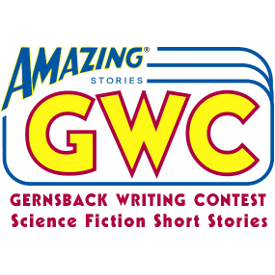 Writing a novel is a huge amount of work. A giant commitment and accomplishment that shouldn’t go to waste – especially if it’s good stuff. But the lineups at the doors of the traditional publishing houses get longer all the time and the manuscripts can start to pile up. A fire hazard, at the very least, and a lot of dead trees.
Writing a novel is a huge amount of work. A giant commitment and accomplishment that shouldn’t go to waste – especially if it’s good stuff. But the lineups at the doors of the traditional publishing houses get longer all the time and the manuscripts can start to pile up. A fire hazard, at the very least, and a lot of dead trees.
The digital age may have saved us from teetering stacks of novel drafts, but the fact remains that there are countless stories that we will never get to read because they’ll never be published. For whatever reason, some writers will choose to let that manuscript languish rather than take a chance and go it alone.
Luckily, there are those who have braved these new and changing times and have found creative ways to get those stories into our eager hands. There’s a lot to be said for not waiting around to be discovered, but publishing your own books means adding a whole new set of job skills to your résumé. You’re not just a writer anymore; you’re an editor, publisher, publicist and agent. And that’s only for starters if your projects involve multiple media.
Meet Astra Crompton: author of fantasy novels and short stories; designer of graphic novels and webcomics; sketch artist and social media upstart.
Monique Jacob for Amazing Stories: “What made you decide to self-publish?”
Astra Crompton: “A combination of hating doing submission letters, the endless waiting and hoping for replies, inevitable rejection letters, and the fact that I had a lot of visual design requirements for my projects that I was bluntly told would be ignored by most publishing houses – especially for a new and ‘unknown’ author. I wanted to build a brand that would uphold the ideals I had for my books, and the freedom to be able to do illustrations and maps and all those delicious extras that are an integral part of building my world.”
ASM: “How are you promoting your books?”
AC: “I am still learning about promotion, and really, with the tiny amount of time I have for such efforts, I am atrocious for not promoting them efficiently or enough. I have the basics up, at least: website (https://www.astracrompton.com), facebook page (https://www.facebook.com/pages/Astra-Crompton/224550507564590), and the direct pages on my publisher’s website. I occasionally use Twitter (#ulzaorith), and increasingly Tumblr (astracrompton), as well as DeviantART (https://tarorae.deviantart.com/ ) for the art side of my works, and https://www.otherworldscomics.bigcartel.com for fundraising. These sorts of social media are great for building hype and reaching a wider audience, but you have to keep up with them, and that takes a lot of time, daily.”
ASM: “Would you use the same process again?”
AC: “Yes! And I have repeated the process for many projects! I have my short stories up on Smashwords, which is great for bare bones, stripped down ebooks in all manner of formats. I have my novels, graphic novels and short story collections available in print through CreateSpace. I find both user friendly, the quality and efficiency good, the royalties generous, and a great amount of flexibility for being able to tailor the publishing process to the works as needed. They enable you to do as much or as little as you need. Personally, I take care of the entire process myself – cover design, cover and interior artwork, editing, formatting, layout design, proofreading, and all. If you’re not that comfortable in fully heading your project, they both have solid support networks, and do offer help packages on a scaling price scale. I also take commissions for these sorts of publishing design projects; just email me for a quote: cosmos@astracrompton.com
ASM: “Tell us about a current project you’re working on.”
AC: “I’m currently working on two comic projects (Weaponry and Angel*Down) and a trilogy of high fantasy novels (The Prophet’s Tale). All of these works have been several years in the planning, and will take several more to see to completion. Thankfully with webcomics these days, I can post a page at a time, which means I keep a weekly pace and it enables me to feel like I’m making tangible progress. The novels I’ve been working on for about 14 years, they are epics, and they set the stages for another trilogy and a series of nine books that follow, so I really want to make sure they’re done as well as I can possibly do them. That means not only the writing (and they’re pushing the 800 page mark apiece), but also the illustrations, appendices, supplementary material (such as language translations, maps etc) and the cover art – all takes a great deal of time and effort to achieve.”
ASM: “You like to involve your fans in the creative process. How does that work?”
AC: “For the comics, I encourage an interactive readership. When you are posting something on an ongoing basis, like a blog or comment, it helps the reader keep coming back week after week, and even checking it several times during the week for the dialogue, even if there is no new content. We get to know one another, and this gives the readers a sense of what to expect from me, and likewise, gives me a sense of what kind of tastes, cleverness, nerves and so forth are there in my readers. How far can I push the envelope? Did I execute that expression clearly enough? How is this character being received or perceived? Having this sort of immediate feedback helps you fine-tune and improve your craft with genuine feedback through the form of reactions. For my comic Weaponry, it is also a crucial part of the plot. I’m dealing with three key protagonists, each of whom has a very different and very distinctive narration style, and depending on which character the readers vote for at the end of each chapter, their choices determine who narrates the following chapter, which events become canon story and which relationships develop between the cast members. It’s like a real-time choose your own adventure novel, in which I present clues and temptations and allusions, and let the readers steer the plot’s course through it. In a sense it is a collaboration. For me, I tend to be far too abundant in my creativity, so having questions I can’t answer on my own, or needing to put the brakes on before forging ahead with untold years of backstory and dramatic story arcs keeps me accountable to my readers and keeps the project from getting out of hand. It also keeps me interested, because despite being the creator, it’s nice to still get to enjoy the suspense of cliff-hanger chapter endings because the most I know is the possible ways the story might unfold from there, rather than the truth until the votes come in. And Douglas Adams said it best: I’m a performance artist – I need the enthusiasm of others to keep me focused on a project, otherwise I get too easily sidetracked by a thousand and one new ideas!”










